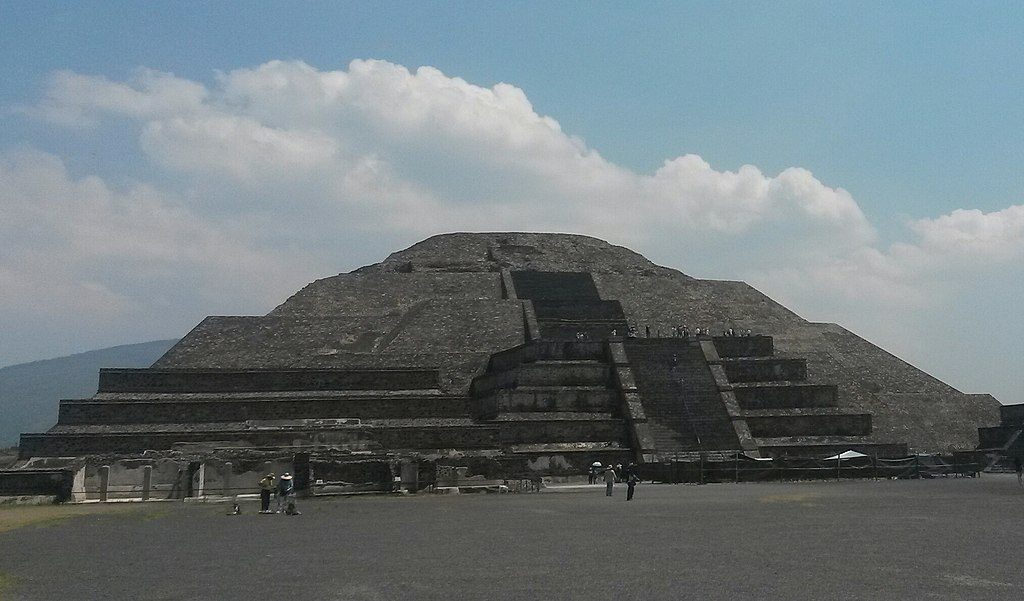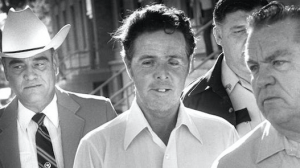At the heart of the mighty Aztec empire laid the capital Tenochtitlan, the Venice of the new world. No other civilization at the time could hope to compare to the city’s impressive pyramids, glamorous temples, and advanced aqueducts. At one point in history, Tenochtitlan was so populous that it contained around 200,000 inhabitants. But Tenochtitlan wasn’t always such a powerful urban site. When the Aztecs were immigrants looking for a new home, they were captivated by a mysterious ancient city. To this day, no one really knows who built it or what happened to its inhabitants. But to the Aztecs, they believed that out of this city emerged the whole of human society and order. This once glorious city was known as Teotihuacán.

There is only a minuscule amount of knowledge about Teotihuacán because a sufficient written record of the city does not exist. In fact, no one knows what the people of Teotihuacán called themselves or what the actual name of the city was. Indeed, it wasn’t until much later that the Aztecs named it Teotihuacán, which means “city of the gods.”1 To an extent, the Aztecs were not exaggerating, because Teotihuacán was once an electrifying center for religion, trade, and culture. At one point, the city contained over 2,000 apartment buildings, 600 pyramids, around 500 workshops, and countless temples, plazas, and palaces.2 But how, exactly, did Teotihuacán become such a powerful metropolis? Once again, let us look at what the Aztecs themselves have to say about it.
According to an Aztec legend, the world was created and destroyed four times before the creation of our current world. Each time the world was destroyed, the sun quickly perished alongside it, and a new sun, presided by a god, was required to create another world.3 The first world was under the dominion of Tezcatlipoca–the god of the night. During his era as the sun, there were no humans, but rather a race of vegetarian giants that roamed the Earth. Tezcatlipoca’s reign lasted for 676 years, but it was cut short when Quetzalcoatl, the god of the wind, grew displeased as he saw the other deity ruling above the land. So he used his staff to knock down Tezcatlipoca into the seas at the farthest corners of the earth. Angered by this, Tezcatlipoca gathered his strength and emerged from the water as a powerful jaguar, running through the Mesoamerican plains and mountains. Soon, many jaguars appeared alongside him, and they eventually hunted and killed every giant on Earth–thus bringing an end to the first world.4
Quetzalcoatl then presided over the second world and, under his rule, human-like beings began to appear. His reign was only 364 years long, however, for Tezcatlipoca wanted revenge on his cosmic rival. Using his dark powers to overwhelm the wind god, he launched a massive hurricane that swept away the sun and the people. Darkness then covered the world and the survivors hid in the trees, eventually turning into monkeys.5

Tlaloc, the rain god, found opportunity in the darkness, and quickly took charge over the new third world. Much to Tlaloc’s dismay, Quetzalcoatl was displeased with his rule, and he sent a rain of fire that again destroyed the sun and earth. The survivors who hid from the fire became the ancestors of the dogs, turkeys, and butterflies of today. The goddess of the lakes and oceans, known as Chalchiúhtlicue, then presided over the fourth sun and world. Although her reign lasted much longer than the previous two, tragedy was no stranger to the gods. Although no one knows exactly how the fourth world ended, Aztec accounts seem to tell the story of a great flood covering the Earth, turning the inhabitants of that world into fish, whales, and other creatures of the deep ocean.6
After some time, all the gods gathered at Teotihuacán. The earth was filled with darkness and a new sun was needed. The gods also decided that a moon should provide light when the sun did not. The rich god Tecuciztécatl proudly stepped forth to be the new sun. But a small, humbler god, Nanahuatzin also volunteered. After agreeing to share the Earth, the two made preparations to renew the world.7 For four days, Tecuciztécatl and Nanahuatzin prayed and fasted.8 When they finished, the other gods lit a great fire on the hard earth of Teotihuacán. In his lavish robes, Tecuciztécatl threw valuable quetzal feathers, stone flints, and incense into the fire as sacrifices. Nanahuatzin, having no riches to sacrifice, humbly offered weeds drenched in his own blood. The two slowly then approached the menacing flames of the fire. Tecuciztécatl intended to go first but he was ultimately driven back by the heat of the inferno. He approached it again for the second time… the third… the fourth. No matter what he did, the rich god was being held back by his fear. Then Nanahuatzin stepped forward. With his eyes closed and mind stilled, Nanahuatzin leapt into the great fire. Having been awestruck by his rival, Tecuciztécatl quickly rushed into the flames. Nanahuatzin then became the new sun, while Tecuciztécatl became the moon.9

The gods then waited for the new world to develop. However, after a while, the gods noticed that nothing was happening. Why wasn’t the new sun in motion? Why hadn’t the world been fully restored? After a discussion with Nanahuatzin, the rest of the gods then threw themselves into the fire, one by one, to restart the world. After all the gods sacrificed themselves, the age of the fifth sun began, and the world was now in motion. It was then, that out of Teotihuacán human society was born. The city flourished under the leaders and priests of Teotihuacán and it is said that after their deaths the pyramids of the sun and moon were built by giants.10
Though we may never know how this city actually came to be, it is no mystery that Teotihuacán was once a revered city in Mesoamerica. To this day, many visit the ruins of Teotihuacán and observe its sites, such as the “Avenue of the Dead,” a two-mile road that connects the Pyramid of the Moon to a large market. Other wonders include the towering Pyramid of the Sun, which was once a revered ritual site because it was built over a cave that many once believed was the place where humans emerged into the world.11 Some of the palaces and temples still stand today, such as the famed temple of Quetzalcoatl. While Teotihuacán may have a murky history, its name continues to stand against the sands of time, eternally offering its mysterious beauty to curious observers everywhere who yearn to learn more of humanity’s past.
- Early Civilizations in the Americas Reference Library, 2005, s.v. “Teotihuacán,” by Sonia G. Benson. ↵
- Charles Phillips, Aztec and Maya: The Complete Illustrated History: The Greatest Civilizations of Ancient Central America with 1000 Photographs, Paintings and Maps (New York: Metro Books, 2008), 55. ↵
- Early Civilizations in the Americas Reference Library, 2005, s.v. “Teotihuacán,” by Sonia G. Benson. ↵
- Charles Phillips, Aztec and Maya: The Complete Illustrated History: The Greatest Civilizations of Ancient Central America with 1000 Photographs, Paintings and Maps (New York: Metro Books, 2008), 160. ↵
- Charles Phillips, Aztec and Maya: The Complete Illustrated History: The Greatest Civilizations of Ancient Central America with 1000 Photographs, Paintings and Maps (New York: Metro Books, 2008), 160. ↵
- Charles Phillips, Aztec and Maya: The Complete Illustrated History: The Greatest Civilizations of Ancient Central America with 1000 Photographs, Paintings and Maps (New York: Metro Books, 2008), 161. ↵
- Charles Phillips, Aztec and Maya: The Complete Illustrated History: The Greatest Civilizations of Ancient Central America with 1000 Photographs, Paintings and Maps (New York: Metro Books, 2008), 161. ↵
- Early Civilizations in the Americas Reference Library, 2005, s.v. “Teotihuacán,” by Sonia G. Benson. ↵
- Charles Phillips, Aztec and Maya: The Complete Illustrated History: The Greatest Civilizations of Ancient Central America with 1000 Photographs, Paintings and Maps (New York: Metro Books, 2008), 162. ↵
- Early Civilizations in the Americas Reference Library, 2005, s.v. “Teotihuacán,” by Sonia G. Benson. ↵
- World History Encyclopedia, 2011, s.v. “The Teotihuacan Empire, 300–650 CE,” by Alfred J. Andrea. ↵




102 comments
Audrey Uribe
This is a very fascinating article because of the different theories that are questioned when discussing the way the city Teotihuacan was started. It is so crazy how many different possibilities or even possibilities we don’t know about how it started. Sad that we will never be able to peg just one as how the Aztecs did. Very interesting article.
Olivia Tijerina
I find the message interesting to grasp, because learning about history in a different light. In the article we learn about the Teotihuacán about the stories from the Aztecs. We are also absorbing the culture. Which is an important part of the lesson to learn.Moreover, I find it fascinating to expose the culture in the story of Teotihuacán behind mainly the religion that was suggested by their making upon the Atec’s insight.
Nelly Perez
Interesting to know the story behind the iconic city. I’d love to visit it someday. The architecture design for the temples is perfect to the Aztecs who believed in rituals. It truly is seen as a mystery. I could see how the legend would say that the world was created then destroyed. It was only the reign of the gods and they helped create what was to become the world.
Jacqueline Mendez
I have heard about Teotihuacán before and the Aztecs, back in Cd. Juarez, they used to drill us with the Aztec and Mayan history. This article gave me a lot of new information about the Aztecs that I never knew about. For example, I didn’t know that they believed that the world had been destroyed and created four times before the current world. I would love to visit this place and its pyramids.
Juan Arceo
I absolutely love the Aztec culture and all the myths/history that comes along with it and this article did not disappoint. It was truly interesting to see how basically there were four versions/gods who tried to ignite and basically start the world but each one had a flaw or somebody against them. Eventually when they all were united, the creation of the world was successful and thus Teotihuacan was able to be formed.
Emmanuel Ewuzie
Aztec people were very peculiar. My roommate is actually reading a book about the Aztecs and their ways of life which includes sacrificing humans to the gods. There were a lot of human sacrifices as it was part of the Aztecs’ culture. I’m glad to read there was more to their culture and legacy than just the human sacrifices. This article did provide clarity as to why the Aztecs held their religion so high.
Rinnu Joy
This article is really interesting to read. The ideas about the history of Teotihuacan and its very being is really interesting. The ideas mentioned about the different gods and at last putting themselves in fire to make everything in the motion, flood turning the inhabitants into sea animals, and so on are well written.
Congratulations for the great work!
Roberto Rodriguez
It is always fascinating to read all of the origin stories of certain cultures/civilizations and even the world. Everyone has their own unique spin to it, the account of the creation of the world is very detailed and it makes me wonder where we got this information? It is also very specific, like those who hid from the rage of Quetzalcoatl became the ancestors of the dogs, turkeys, and butterflies of today. I do not know how any of those are really related, but I do know that it must be from someone’s very imaginative mind.
Charli Delmonico
This article was so well-written; I was engaged throughout the entire story. I recognized a few parts of the article, but most of the information was completely new to me. I find it really interesting that the city was magnificent, and yet, there are no written records to describe what happened to it and how it came to be. The story of the various gods that helped create the different worlds with different suns was very entertaining, and I could easily tell that the author put a lot of work into researching this information.
Nicole Ortiz
This was such an interesting article because it was really cool to see the many different theories and possibilities that there are of how the city of Teotihuacan came to be. This article did a really good job at trying to explain those different theories and portraying how the Aztecs believed the world was created and came to be and telling the reader about the different rulers that existed.